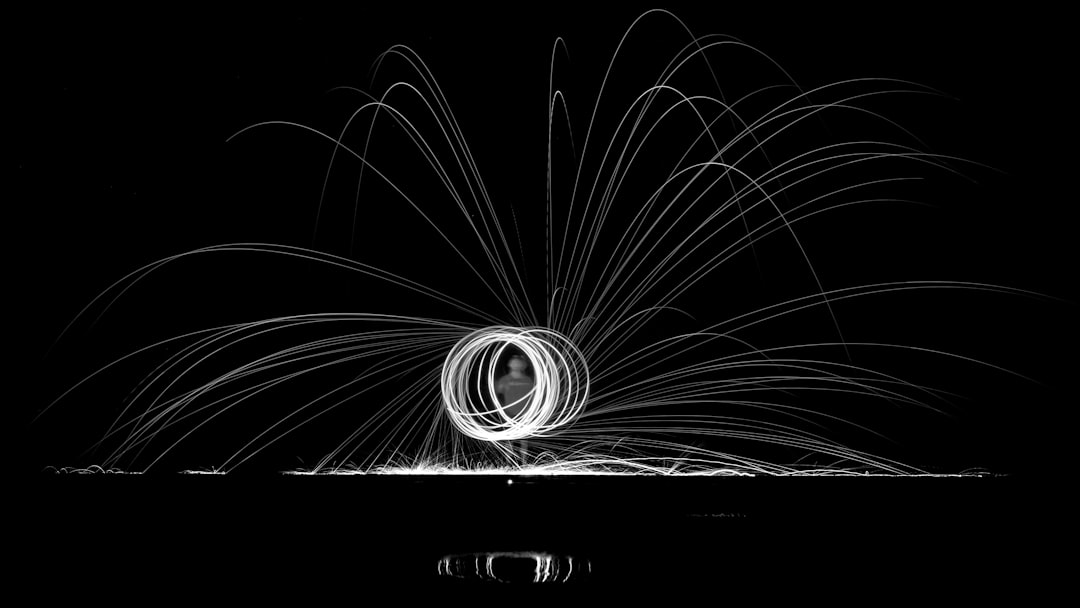The magnetic field reversal cycle is a fascinating phenomenon that has intrigued scientists and researchers for decades. This cycle refers to the periodic switching of Earth’s magnetic poles, where the magnetic north pole becomes the magnetic south pole and vice versa. Such reversals are not merely a curiosity; they are significant events that have occurred throughout Earth’s history, shaping the planet’s geological and biological landscape.
Understanding this cycle is crucial for comprehending the dynamics of Earth’s interior and its interactions with the solar system. As Earth continues its journey through time, the magnetic field reversal cycle serves as a reminder of the planet’s dynamic nature. These reversals occur over thousands to millions of years, making them difficult to observe directly within a human lifetime.
However, geological records provide a wealth of information about past reversals, allowing scientists to piece together a timeline of Earth’s magnetic history. This article will delve into various aspects of magnetic field reversals, exploring their causes, effects, and implications for life on Earth.
Key Takeaways
- The Earth’s magnetic field has a cycle of reversal, where the north and south magnetic poles switch places over time.
- Understanding the Earth’s magnetic field is crucial for studying the planet’s history and predicting future changes.
- Evidence of magnetic field reversals can be found in rocks and ocean floor sediments, providing valuable insights into the Earth’s past.
- Causes of magnetic field reversals are still not fully understood, but they may be related to processes in the Earth’s core.
- Magnetic field reversals can have significant impacts on Earth, including potential effects on climate and technological systems.
Understanding Earth’s Magnetic Field
Earth’s magnetic field is generated by the movement of molten iron and nickel in its outer core. This geodynamo process creates a magnetic field that extends far beyond the planet’s surface, forming a protective shield against solar radiation and cosmic rays. The magnetic field is not uniform; it varies in strength and direction across different regions of the globe.
This variability is essential for navigation, as compasses rely on the magnetic field to point toward true north. The magnetic field also plays a critical role in maintaining life on Earth. It protects the atmosphere from being stripped away by solar winds, which can erode planetary surfaces and disrupt ecosystems.
The field’s strength and orientation influence various natural phenomena, including animal migration patterns and weather systems.
Evidence of Magnetic Field Reversals

Evidence of magnetic field reversals can be found in various geological formations, particularly in volcanic rocks and ocean floor sediments. When magma cools and solidifies, iron-rich minerals within it align with the Earth’s magnetic field at that moment in time. As a result, these rocks preserve a record of the magnetic orientation at the time of their formation.
By studying these rocks, scientists can identify periods when the magnetic field was reversed. One of the most compelling pieces of evidence comes from the ocean floor, where symmetrical patterns of magnetic stripes have been discovered on either side of mid-ocean ridges. These stripes indicate periods of normal and reversed magnetic polarity, providing a timeline for when reversals occurred.
Additionally, sediment cores extracted from deep-sea drilling projects reveal changes in magnetic orientation over millions of years, further corroborating the occurrence of these reversals throughout Earth’s history.
Causes of Magnetic Field Reversals
| Cause | Description |
|---|---|
| Geomagnetic Reversal | The Earth’s magnetic field reverses its polarity, with the north and south magnetic poles switching places. |
| Geodynamo Process | Changes in the Earth’s outer core, where the magnetic field is generated, can lead to reversals. |
| External Factors | External influences such as solar activity and cosmic rays can also affect the Earth’s magnetic field and potentially lead to reversals. |
The exact mechanisms behind magnetic field reversals remain an area of active research and debate among geophysicists. However, several theories have been proposed to explain why these reversals occur. One leading hypothesis suggests that changes in the flow of molten iron within the outer core can disrupt the geodynamo process, leading to instability in the magnetic field.
This instability may cause the magnetic poles to wander and eventually reverse. Another theory posits that external factors, such as interactions with solar winds or cosmic events, could influence the behavior of Earth’s magnetic field. For instance, significant solar storms may temporarily alter the magnetic field’s strength or orientation, potentially triggering a reversal.
While these theories provide valuable insights into the causes of magnetic field reversals, further research is needed to fully understand the complex interplay of factors involved.
Impact of Magnetic Field Reversals on Earth
The impact of magnetic field reversals on Earth is multifaceted, affecting both geological processes and biological systems. Geologically, reversals can influence volcanic activity and tectonic movements. The shifting of magnetic poles may correlate with changes in mantle convection patterns, which can lead to increased volcanic eruptions or earthquakes in certain regions.
Biologically, there is evidence to suggest that magnetic field reversals may have played a role in evolutionary processes. Many species, particularly migratory animals like birds and sea turtles, rely on Earth’s magnetic field for navigation. A sudden reversal could disrupt their migratory patterns, potentially leading to population declines or shifts in species distribution.
Understanding these impacts is crucial for predicting how future reversals might affect both natural ecosystems and human societies.
The Frequency of Magnetic Field Reversals

Magnetic field reversals do not occur at regular intervals; rather, they are sporadic events that have varied in frequency throughout Earth’s history. On average, reversals happen every 200,000 to 300,000 years, but this frequency can fluctuate significantly over geological timescales. For instance, during certain periods known as “reversal clusters,” multiple reversals may occur within a relatively short timeframe.
The last major reversal, known as the Brunhes-Matuyama reversal, took place approximately 780,000 years ago. Since then, Earth has experienced a relatively stable magnetic field, leading some scientists to speculate about whether we are due for another reversal soon. By studying past reversal patterns and their timing, researchers hope to gain insights into future occurrences and their potential implications.
The Role of Geomagnetic Reversal in Evolution
Geomagnetic reversals may have played a significant role in shaping evolutionary trajectories on Earth. The relationship between these reversals and biological evolution is complex and not fully understood; however, there are several hypotheses regarding their influence on species development and adaptation. For example, changes in environmental conditions during a reversal could create new ecological niches or alter existing ones, prompting species to adapt or evolve in response.
The disruption caused by a reversal could lead to shifts in food chains or habitat availability, ultimately influencing which species thrive or decline during these tumultuous times. Understanding this relationship between geomagnetic events and evolution can provide valuable insights into how life on Earth has adapted to changing conditions over millions of years.
Predicting Magnetic Field Reversals
Predicting when a magnetic field reversal will occur remains a challenging task for scientists. While researchers have made significant strides in understanding past reversals through geological records, forecasting future events is complicated by the unpredictable nature of Earth’s geodynamo processes. Current models rely on analyzing patterns from historical data and monitoring changes in the magnetic field’s strength and orientation.
Recent advancements in satellite technology have improved our ability to measure fluctuations in Earth’s magnetic field with greater precision. These measurements can help scientists identify potential signs of an impending reversal; however, accurately predicting the timing and impact of such events remains elusive. Continued research into geomagnetic dynamics will be essential for enhancing predictive capabilities and understanding how future reversals might unfold.
The Relationship Between Magnetic Field Reversals and Climate Change
The relationship between magnetic field reversals and climate change is an area of ongoing investigation within the scientific community. Some researchers propose that geomagnetic reversals could influence climate patterns by altering atmospheric circulation or ocean currents. For instance, changes in the distribution of solar radiation due to shifts in Earth’s orientation could impact global temperatures and weather systems.
Moreover, there is evidence suggesting that certain climatic events may coincide with periods of magnetic field instability or reversal. Understanding these connections could provide valuable insights into how Earth’s climate has evolved over time and how it may respond to future changes in both natural and anthropogenic factors. As climate change continues to be a pressing global issue, exploring the interplay between geomagnetic events and climate dynamics becomes increasingly relevant.
Magnetic Field Reversals and Human Technology
As society becomes increasingly reliant on technology, understanding the implications of magnetic field reversals on human systems is crucial. Modern technology often depends on satellite navigation systems that utilize Earth’s magnetic field for accurate positioning. A sudden reversal could disrupt these systems, leading to navigational errors or failures in communication networks.
Additionally, fluctuations in the magnetic field can affect power grids and electronic devices by increasing vulnerability to solar storms and electromagnetic interference. Preparing for potential disruptions caused by geomagnetic reversals will require collaboration between scientists, engineers, and policymakers to develop strategies that mitigate risks associated with these natural phenomena.
The Importance of Studying Magnetic Field Reversals
In conclusion, studying magnetic field reversals is essential for understanding not only Earth’s geological history but also its future trajectory. These events have far-reaching implications for life on Earth, influencing everything from evolutionary processes to climate dynamics and technological systems. As researchers continue to unravel the complexities surrounding geomagnetic reversals, they contribute valuable knowledge that can inform our understanding of planetary processes and their impact on human society.
The ongoing exploration of this phenomenon highlights the interconnectedness of Earth’s systems and emphasizes the need for interdisciplinary approaches to address challenges posed by natural events like magnetic field reversals. By fostering collaboration among scientists from various fields—geophysics, biology, climatology, and technology—society can better prepare for potential future changes while deepening its appreciation for the intricate workings of our planet.
The phenomenon of Earth’s magnetic field reversal, where the magnetic north and south poles switch places, is a fascinating subject that has intrigued scientists for decades. This reversal cycle, which occurs over thousands to millions of years, can have significant implications for our planet’s climate and technological systems. For those interested in delving deeper into this topic, a related article can be found on Freaky Science. This article explores the intricacies of the magnetic field reversal cycle and its potential impacts on Earth. You can read more about it by visiting Freaky Science.
WATCH THIS 🌍 Earth’s Magnetic Field Is About To Flip: The Crisis You Need to Know
FAQs
What is a magnetic field reversal cycle?
A magnetic field reversal cycle refers to the process in which the Earth’s magnetic field undergoes a complete reversal of its polarity, causing the magnetic north and south poles to switch places.
How often does a magnetic field reversal cycle occur?
Magnetic field reversal cycles are not regular and can occur at irregular intervals. The most recent reversal occurred approximately 780,000 years ago.
What causes a magnetic field reversal cycle?
The exact cause of magnetic field reversal cycles is not fully understood, but it is believed to be related to changes in the Earth’s outer core, where the magnetic field is generated.
What are the potential effects of a magnetic field reversal cycle?
During a magnetic field reversal cycle, the Earth’s magnetic field weakens, which could potentially lead to increased exposure to solar and cosmic radiation. However, the full extent of the effects is still not fully understood.
How do scientists study magnetic field reversal cycles?
Scientists study magnetic field reversal cycles by analyzing the magnetic signatures preserved in rocks and sediments, as well as by studying the behavior of the Earth’s magnetic field in the present day.
